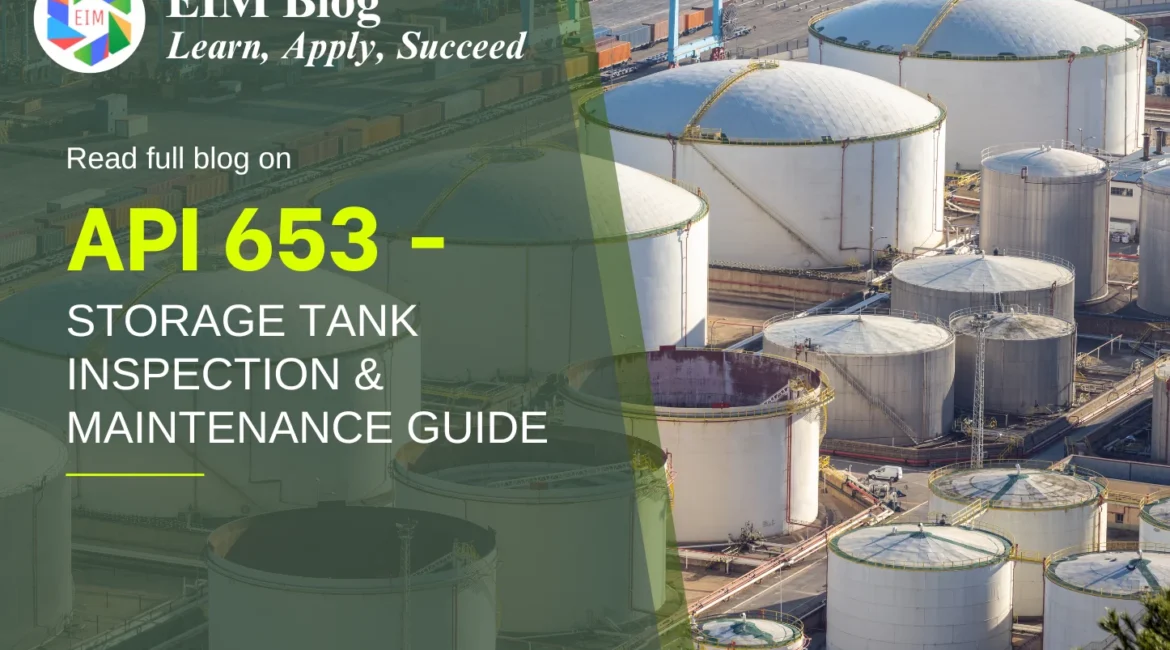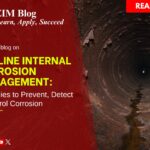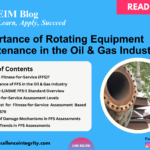
API 653 – Storage Tank Inspection & Maintenance Guide
Above-ground storage tanks (ASTs) are critical assets in the oil and gas industry, used to store everything from crude oil and refined fuels to chemicals and wastewater. While their role in day-to-day operations is often taken for granted, inadequate inspection and maintenance can lead to catastrophic failures, costly cleanups, and regulatory penalties. Proactive care of ASTs is not just good engineering—it’s a sound financial and environmental strategy.
Table of Contents
- What Are Above-Ground Storage Tanks (ASTs)?
- Why AST Inspection and Maintenance Matter
- Key Regulations and Industry Standards
- Inspection Techniques and Technologies
- Maintenance Checklist & Strategies
- Failure Mechanisms and Risk Areas
- Case Studies: Failure vs. Prevention
- Conclusion: ROI of Proactive Maintenance
What Are Above-Ground Storage Tanks (ASTs)?
ASTs are large, robust containers used for storing a variety of liquids, including petroleum products, chemicals, and water. Unlike underground tanks, ASTs are installed above the surface, allowing for easier access and inspection. They can be found in many sectors including oil & gas, chemicals, transportation, agriculture, manufacturing, and food processing industries.
Why AST Inspection and Maintenance Matter
Proper AST inspection and maintenance is critical for ensuring structural integrity, operational efficiency, and regulatory compliance. Failing to inspect and maintain ASTs can lead to leakage, environmental contamination, fire hazards, and even tank collapse. Moreover, the financial costs associated with reactive maintenance, litigation, and cleanup far exceed those of scheduled upkeep.
- Prevent catastrophic spills and safety incidents
- Maintain operational efficiency and minimize downtime
- Extend tank life and reduce replacement costs
- Ensure compliance with EPA, API, NFPA and local regulations
Key Regulations and Industry Standards
- API 653: Governs inspection, repair, alteration, and reconstruction of steel ASTs.
- API 650: Focuses on the design and construction of welded tanks for oil storage.
- STI SP001: Covers smaller, shop-fabricated ASTs including risk-based inspection frequencies.
- EPA 40 CFR Part 112: U.S. Spill Prevention, Control, and Countermeasure (SPCC) regulations.
- NFPA 30: Flammable and combustible liquid code enforced by fire departments.
- EEMUA 159: UK-based inspection and maintenance guide for cylindrical vertical storage tanks.
Inspection Techniques and Technologies
Advanced non-destructive testing (NDT) methods allow inspectors to assess tank integrity without dismantling or emptying the tank:
- Visual Inspection: Detects external corrosion, bulging, cracks, or coating damage.
- Ultrasonic Testing (UT): Measures wall thickness and maps corrosion.
- Magnetic Flux Leakage (MFL): Detects pitting, flaws and thinning in the tank floor.
- Radiographic Testing: Examines welds for cracks or voids.
- Drones & Robotics: Used for high-risk or hard-to-reach areas like roofs and internal spaces.
- Acoustic Emission Testing: Identifies active crack growth and leak sources during pressurization.
- Thermography: Assesses heat distribution to spot blockages, fluid layering, or insulation degradation.
Maintenance Checklist & Strategies
Exterior Inspection: Check for dents, leaks, foundation stability, rust, and paint breakdown. Monitor any deformations, coating failures, or environmental wear.
Interior Inspection: Look for sludge buildup, corrosion, and microbial activity. Plan cleanouts during downtime or scheduled shutdowns.
Valves & Fittings: Ensure all components are leak-free, corrosion-resistant, and operational. Inspect gaskets, flanges, and mechanical seals for fatigue.
Tank Capacity: Monitor filling levels to prevent overpressure or underfilling collapse. Install automatic overfill protection systems where applicable.
Documentation: Maintain up-to-date records of inspection reports, permits, design specs, certifications, and maintenance logs.
Coating & Cathodic Protection: Reapply protective coatings periodically and inspect sacrificial anodes or impressed current systems. Perform potential surveys for verification.
Leak Detection Systems: Install and regularly calibrate continuous monitoring sensors, alarms, and remote alerts.
Routine Cleaning: Schedule periodic cleanouts to remove sludge, scaling, microbial layers, and fuel residues that accelerate corrosion and reduce usable volume.
Training & SOPs: Ensure your inspection and operations team is trained on the latest SOPs and hazard prevention practices for ASTs.
Failure Mechanisms and Risk Areas
- Corrosion: Especially on tank floors and near weld joints where water accumulates. Floor corrosion often goes unnoticed without UT or MFL scans.
- Structural Weakening: Due to metal thinning, fatigue, or seismic and wind loads exceeding design limits.
- Foundation Settlement: Differential settlement causes shell distortion, annular ring stress, or cracking in concrete pads.
- Vacuum Collapse: Tanks can implode during unloading or cleaning cycles if vents are clogged or missing.
- Weld Failures: Defective or aged welds can crack under cyclical pressure loads or stress corrosion.
- Microbial-Induced Corrosion: Sulfate-reducing bacteria can rapidly degrade steel from the inside under stagnant fluid or sludge conditions.
- External Impacts: Cranes, forklifts, or mobile equipment collisions damage shells, roofs, or nozzle connections, causing severe breaches.
Case Studies: Failure vs. Prevention
Case 1: Refinery Tank Failure in India – A refinery’s failure to conduct routine API 653 inspections resulted in a tank bottom rupture, spilling diesel and causing environmental damage. Cleanup and fines exceeded ₹20 crore. Post-incident analysis showed severe corrosion and neglected floor thinning.
Case 2: UAE Tank Farm Success – Regular ultrasonic inspections and robotic MFL floor scans saved over $5 million in predictive repairs and downtime. Preventive maintenance extended tank service life by over a decade. Additionally, early detection of settlement issues allowed for timely foundation correction, avoiding structural collapse.
Case 3: Gulf Coast Chemical Facility – Implementation of drone inspections reduced man-entry risk and cut inspection time by 60%. Findings included insulation degradation and minor coating issues, promptly addressed during scheduled shutdown.
Conclusion: ROI of Proactive Maintenance
ASTs are high-value assets that require strategic oversight and care. Proactive inspection and maintenance offer massive returns by minimizing risk, ensuring compliance, and maximizing equipment life. Instead of waiting for a leak or explosion, tank operators must prioritize preventive action—because safety, sustainability, and savings go hand in hand.
Stay ahead—invest in routine AST inspections, adopt advanced NDT techniques, implement a digital asset management system, and align with API 653 and STI SP001 standards for unmatched safety and performance.




